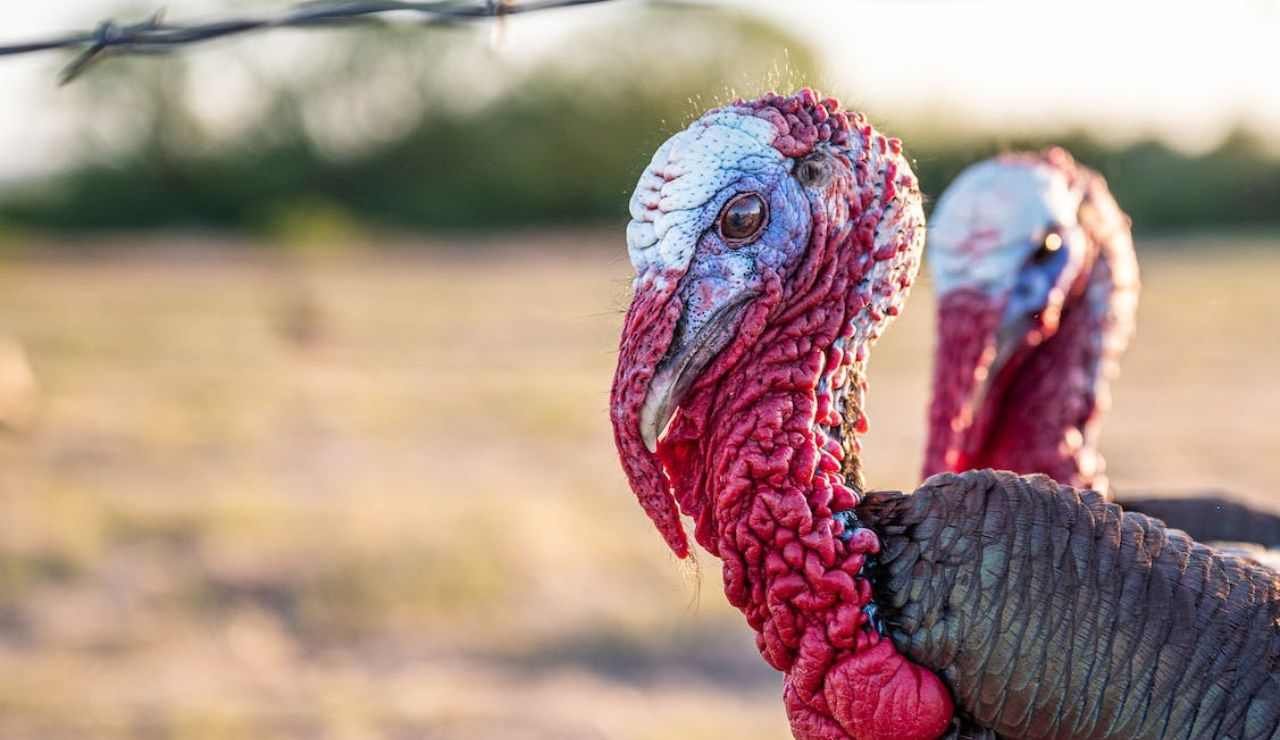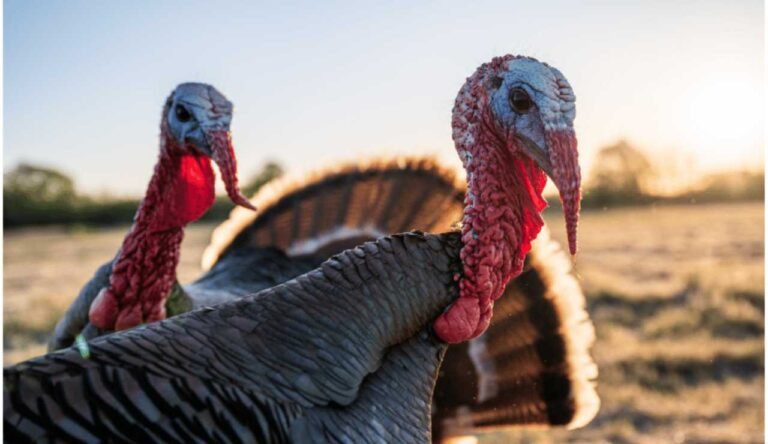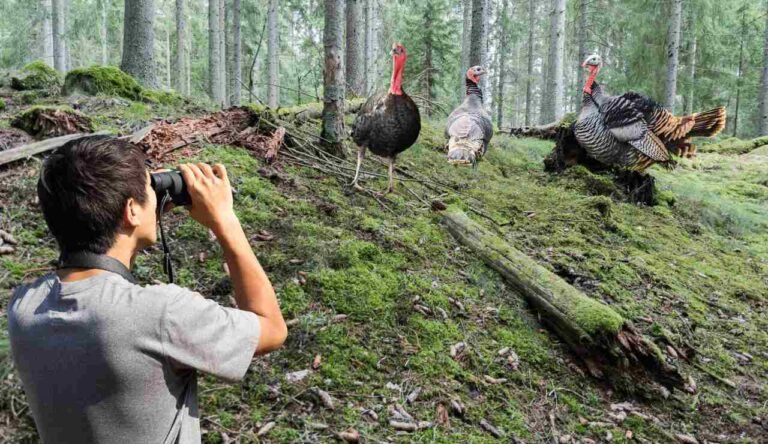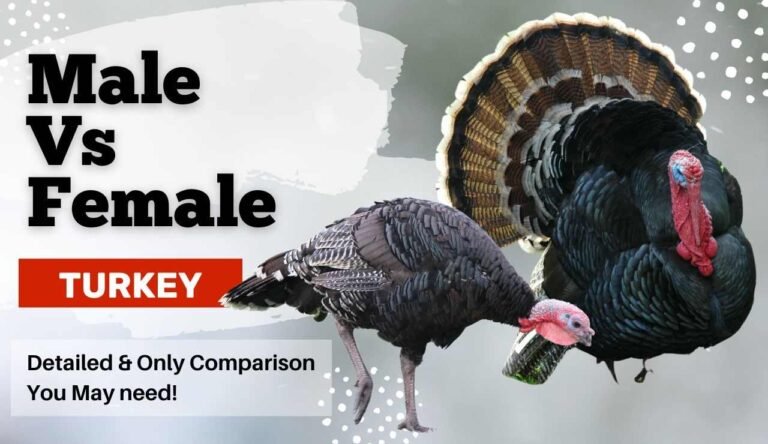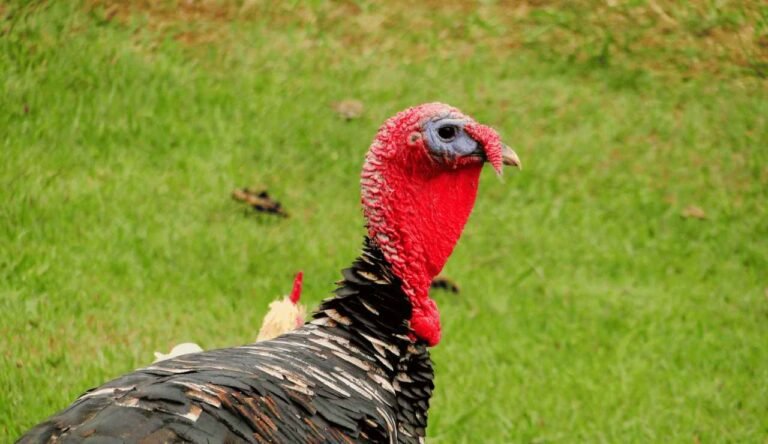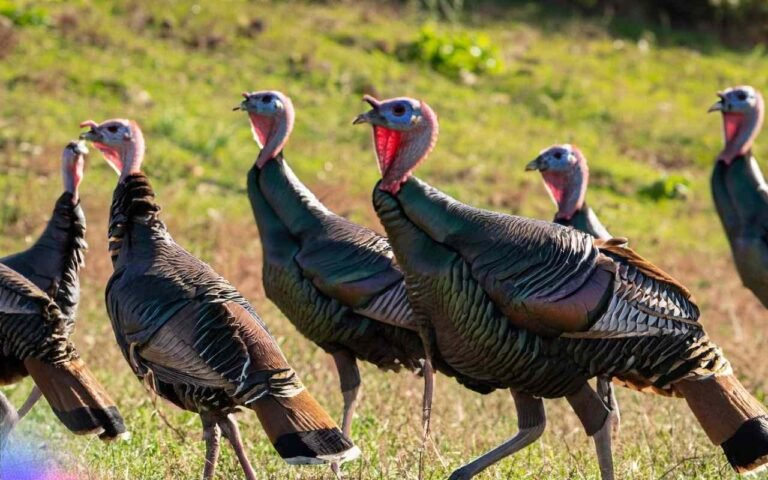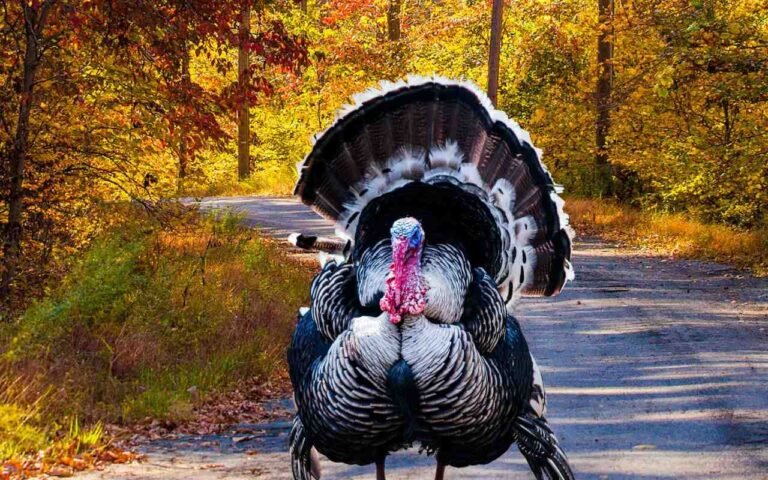Turkey Calls: Discover the Ultimate Turkey Calling Techniques!
Mastering turkey calling is essential for a successful hunt. Hunters may attract turkeys closer by imitating their sounds. However, attracting these secretive birds requires more than picking up a call and blowing into it. Understanding turkey vocalizations, choosing the perfect Call, practicing successful calling tactics, and timing your calls are covered in this article. Anyone can call turkeys with these skills and patience.
What is Turkey calling, and why is it important?
By imitating the noises and vocalizations of turkeys, hunters may draw the attention of wild turkeys using the turkey calling method. Diaphragm and friction calls are two distinct kinds of turkey calls, each making a different sound. Understanding how to realistically and successfully employ each Call to draw turkeys into shot range is crucial. Turkeys are best called in the morning, evening, and spring mating season. The likelihood of filling the hunter’s tag may be increased by using turkey calling, a highly efficient method of luring turkeys into the hunting area.
Turkey calling tips and techniques.
The following tactics and advice can help you become a better turkey caller:
Mix It Up: Don’t depend on a single call or sound. To keep gobblers engaged, it’s crucial to alter things and employ a variety of calls and noises.
Start Simple: Start with push-pull or box calls if you’ve never hunted a turkey. Compared to more complex calls like mouth calls or slate calls, they are often simpler.
Adapt the Call to the Situation: Various calls are more effective in various circumstances. For instance, a mouth call may be more successful for a gobbler nearby than a box call for one further away.
Use a Locator Call: Gobblers may be located and drawn closer by locator noises such as crow calls or owl hooters. These calls resemble the noises other birds produce, which turkeys are used to hearing.
Practice makes perfect: Like everything else, your calling will improve the more you do it. This is particularly true for mouth calls, which might be difficult to master.
Bear in mind that calling is just one aspect of gobbler hunting. To improve your chances of success, it’s critical to have sound hunting and concealing techniques. It’s also important to remember that phoning isn’t always essential and sometimes becomes overused.
Other points to consider
- Find the ideal turkey call for your style and orientation.
- Know when to utilize turkey yelps, clucks, purrs, and gobbles.
- Use realistic calling tactics to simulate wild turkey sounds and convince birds.
- Avoid over-calling, interrupting calls, and taking turns calling when hunting with others.
- Decoys may attract turkeys and improve your calls. Set them up naturally and away from your hunting spot.
Turkey calling requires time, practice, and mastery of turkey vocalizations. With the correct equipment, tactics, and practice, you may become a great turkey caller and improve your hunting odds. Let’s explore more specifically the ideal method for Turkey Calls.
What are some common turkey calls, and when should they be used?
Several turkey sounds must be used to entice and interact with the birds during a turkey hunt. The most popular turkey calls used by hunters are listed below:
- Yelp: This straightforward turkey sound often comprises a string of one-note vocalizations. The simple Yelp is the most fundamental form of turkey communication, yet it may have several connotations depending on how the hen utilizes it. During mating season, a hen often uses it to communicate with a gobbler.
- Cluck: The easiest hen call for novices to learn is the cluck. It consists of one or two quick, staccato notes and is used to attract other turkeys’ attention or to convey happiness. A hen will also use it to summon her young.
- Purr: Hens use the purr, a gentle, rolling call, to express their happiness and relaxation. The hen normally makes it when it is eating or sleeping.
- Gobble: All turkey hunters yearn to hear the sound of gobbling in the woods. The sound is intended to draw in females and repel rival males. There are many gobble sounds, some of which are intended to respond to the query “Where are you?”
- Box Call: This Call is exceedingly user-friendly and quite popular. It consists of a rectangular box with a cover that moves back and forth across the top, causing friction and making turkey noises on the box’s surface. Box calls may also make clucks, purrs, and gobbles, but their best results come from making loud, high-pitched yelps.
- Pot and Striker Call: This kind of Call consists of a circular striker, generally a wooden stick with a tapered end, and a pot, which is often made of glass, slate, or ceramic. The striker is pressed across the pot’s surface to make turkey noises. Yelps, purrs, clucks, and gobbles are just a few of the many turkey noises that pot and striker calls may generate.
- Diaphragm Call: Also referred to as mouth calls, a diaphragm call is a reed made of latex or rubber that the hunter holds in his mouth. The hunter utilizes their mouth and air pressure to control the reed and produce turkey noises. Although calling with the diaphragm requires practice, it is incredibly effective, and hands-free once learned.
- Friction Call: Push-button, box, and slate calls are friction calls that create turkey noises by rubbing a surface with a striker. These calls are simple to operate and may generate a variety of turkey noises, such as gobbles, yelps, and purrs.
Difference between a box call, a slate call and Diaphragm Call
| Call Type | Description | Pros | Cons |
|---|---|---|---|
| Box Call | A hinged box with a striker on top. The striker makes turkey noises by rubbing the box boundaries. | Easy to use, loud and long-range, adaptable, and can make a variety of turkey noises. | Not as compact as other call kinds, requires more mobility. |
| Slate Call | A tiny slate, glass, or other pot or pan with a striker to make turkey noises. | Very realistic and delicate turkey noises, small and simple to carry, one-handed usage. | Needs practice and may be impacted by weather (rain can make slate surface less effective). |
| Diaphragm Call | A latex or other flexible call used in the mouth to make turkey noises. | Hands-free operation, adaptable, can make several turkey noises, delicate and lifelike. | It's hard to learn, needs excellent breath control and mouth placement, and may be quieter than other calls. |
Box call techniques
| Box Call Techniques |
|---|
| When pushed and pulled with a handle or striker, a rectangular wooden box with a lid makes music. |
| Easy to operate and more forgiving for novices since it takes less skill and practice to generate authentic turkey noises. |
| Can make more turkey noises, especially loud, aggressive ones like the fly-down cackling or gobble. |
| The sound is created within the box, making it less influenced by dampness. |
| Due of its greater loudness and forceful cries, may be heard further away. |
Slate call techniques
| Slate Call Techniques |
|---|
| A tiny, portable slate or glass surface with a striker that produces sound by dragging it over the surface. |
| To make turkey noises, the striker must be held at the precise angle and pressure. |
| Clucks, purrs, and quiet yelps are typical uses. |
| Slate or glass surfaces might chip or break over time, diminishing sound quality. |
| Its milder sounds may necessitate the hunter to be closer to the turkey. |
Reasons your Turkey call doesn’t work
Using a turkey call may be essential for success while gobbler hunting. A turkey call may not always function as planned, frustrating the hunter. Here are some potential causes of your turkey call’s potential failure:
Dirty striker tip: If your pot or box call has a striker tip, dirt or debris accumulation on the tip may affect the sound quality. Keep the tip free of accumulation and clean it at all times.
Inappropriate rhythm: A tom’s response to your turkey calls might depend on their rhythm. The mere fact that you are producing calls does not guarantee they sound nice, and if the rhythm is off, the turkeys may not react.
Inappropriate call type: Because various turkey calls make distinctive sounds, employing the incorrect Call in a given circumstance may fail to attract any birds. For instance, a hen’s yelp call could not be effective during mating season when toms are seeking a more aggressive sound [9].
Turkey has seen you: Even if your turkey call is great, a bird may not approach you if they see you or feel your presence. To avoid being seen, blend in and dress appropriately camouflaged.
Call too much or too little: Too much or too little calling may drive away turkeys, while insufficient calling might not be sufficient to draw them in. Finding the ideal balance requires practice and might change based on the circumstances.
Overall, several things might make a turkey call unsuccessful. You may improve your chances of success in the field by maintaining the cleanliness of your equipment, utilizing the proper Call for the circumstance, and paying attention to elements like rhythm and calling frequency.
Hunting Strategies Using Turkey Calls
Choose the Right Call: Choose the correct Call: Push-button or diaphragm calls are simple to operate and make authentic turkey noises, making them good choices for beginners. Pot calls, box calls, and slate or glass calls are further varieties of calls.
Mix up your calling: To imitate the sounds of a turkey hen, mix up your calling by experimenting with various call styles and rhythms.
Understand tree talk: Recognize tree language: Pay careful attention to a roosted turkey and wait till the skyline begins to glow pink before letting out a single, gentle tree cry to alert the animal to your presence.
Cut your Call: Use scissors to slightly cut the tape skirt on a diaphragm call if it seems too big and thick in your mouth. To improve the air seal and make a call fit more comfortably, you may also gently bend the metal frame downward.
Stake a Jake: A single Jake or a Jake with a hen in the breeding position are popular early-season decoy combinations. Strutting gobbler decoys may be quite effective too.
Be patient: Turkeys might be slow to react sometimes, so be patient and wait for them to approach you.
Scout your hunting area: Scout the region where you will be hunting to learn where the turkeys rest, eat, and travel.
Dress appropriately: Wear breathable, comfortable clothing that matches the surroundings.
Use cover to your advantage: Use natural cover to hide from turkeys and avoid making rapid movements.
Practice shooting: Before the hunt, practice firing your firearm to ensure you are confident and precise.
Conclusion
In conclusion, turkey calling is vital for hunting. Understanding turkey behavior and employing a range of sounds to connect with them is essential. A well-timed call might bring a turkey into range for a clean shot.
Turkey hunting requires practice and experimentation with various calls and strategies. It takes time to master each Call, but the benefits are worth it. You’ll succeed in the profession if you practice and improve your talents.
Practice, explore, and improve your turkey calling talents. With practice, you can call in and catch that gobbler. Good hunting!
Frequently Asked Questions on Turkey Call
What are frequent turkey-calling mistakes?
According to hunting websites, turkey hunters make many blunders. Mistakes include going too near the birds, being impatient, and using improper calls. Make too much noise or forget the turkey’s great vision. Turkey hunters may not practice or utilize improper gear. Finally, hunters may not position themselves properly or be aware of environmental changes that impact turkey behavior.
How do you clean a turkey call?
Maintaining turkey calls prevents germ accumulation and optimizes function. Use a flat-tipped toothpick, mouthwash, and water to clean mouth calls before and after usage. Keep them in a plastic bag or case in the fridge to avoid contamination. Clean friction pots call using a soft cloth or brush and sand rough places. Avoid water and solvents. Scour pads should be used to clean slate, and box calls in one direction to prevent scratches. Chalk the sound if needed. Keep calls dry, out of direct sunlight and in severe temperatures. Turkey calls may endure years if maintained.
How do you use and maintain a mouth call or diaphragm call?
Insert a mouth call with the tape end first and the reed facing outward and push it to the roof of your mouth to seal. Airflow through the Call vibrates the reeds to generate turkey noises. Experiment with mouth-call positioning to become comfortable. Start with a single or double-reed call and progress to a triple-reed call. After using your mouth Call:
- Rinse it with mouthwash or tap water.
- Dry it with a paper towel.
- Put it back in its case.
Anyone can master turkey calling and hunting with a mouth call with practice and care.
- Louisiana Turkey Season 2026: LA Turkey Hunting [Dates, Regulations, Licenses & More] - January 5, 2026
- Kentucky Turkey Season 2026: Latest Hunting Dates, Regulations & Licenses! - January 5, 2026
- Kansas Turkey Season 2026-2027: Latest Dates, Licenses, and Regulations Now Available! - January 3, 2026
